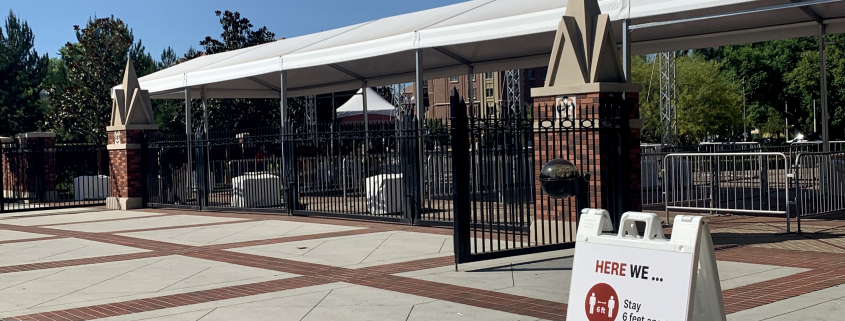Student parties speak to risky pandemic management
The recent parties that have occurred in off-campus housing — despite strict calls for social distancing in light of the worldwide coronavirus outbreak — spell trouble for students living on or near campus, as well as the greater South Central community.
With the coronavirus pandemic continuing to rage in full force across the United States — Los Angeles in particular (L.A. County holds the most cases by a large margin with a whopping 240,000) — the questionable choice for many students to return to USC involves several factors. For some, living situations were not conducive to proper learning; for others, apartment leases were locked in and non-refundable.
Whatever the reason, students arriving at USC for the fall semester now find themselves in a precarious situation — when presented with the option to finally socialize after months of isolation, students are expected to strictly follow social distancing mandates. Disappointingly and, well, unsurprisingly, these students seem to have failed.
Recently, photos and videos on USC’s Reddit page have surfaced showing students at University Gateway, an apartment housing complex just off campus, partying together in public as if the coronavirus mandates never existed.
The quick and obvious response is to criticize the students involved; after all, they are the ones making the choice to go out and party during a time in which it is absolutely crucial to maintain social distancing. Considering the fact that Gateway residents share elevators, hallways and living spaces, it is not too farfetched to imagine that if (or when) one of these students contracts the coronavirus, Gateway, among other akin off-campus housing complexes, will find itself mired as an infection hotspot.
Perhaps such havoc is not so far off. On Aug. 27, Chief Health Officer Dr. Sarah Van Orman confirmed in a media briefing that out of around 1,600 coronavirus tests, 73 students within the University Park Campus community tested positive for the virus, with the first three cases being identified in on-campus housing. To think things are going to magically level off and slow down in the coming weeks would be wishful thinking. That being said, as much as students should be criticized for breaking social distancing protocols, criticism should also be directed toward the University for handling the coronavirus outbreak in a way that pushed more students to live near campus, therefore increasing the overall associated risk.
In early June, the University was optimistically and perhaps naively planning for an in-person semester — no one knew what August would look like in July, let alone June. Despite this uncertainty, President Carol Folt saw it fit to preserve students’ hope that the University would be able to provide in-person classes. Despite the subsequent backtrack to a hybrid model in late June, the impression that there would be any on-campus activity certainly incentivized students to return to campus.
Yet not long after, on July 1, the University announced that classes would be held entirely online, noting that many students had a deadline to secure off-campus leases that same day. Although USC offered its students the bare minimum by sending this email just before leases were locked in, it was sent at 9:16 p.m. PST. For the 70% of students with off-campus leasing who theoretically had less than three hours to figure out whether they would maintain their leases or waste thousands of dollars, such a last-minute change of plan was careless and reckless.
With each passing day this summer and as California coronavirus cases skyrocketed, the fate of the academic year became clearer and clearer. Point being: There was no need for USC to hedge its bets on an in-person semester at the expense of students who otherwise would have made the appropriate decision to take their classes from home.
The recent off-campus coronavirus case surge has troubling implications for student life near campus.Namely, if parties and large gatherings continue to the degree that they have, there might not be one for the foreseeable future. It is only a matter of time before a new wave of cases with the potential to cripple USC is ignited and chaos ensues. At the rate that cases are growing, this seems to be more of a “when” scenario than an “if.” Although criticism of reckless students is 100% valid, it is also necessary to criticize the school and its administration for its subpar approach to handling this pandemic.
All things considered, the blame certainly still lies with students who are making the personal, selfish choice to attend large gatherings and ignore social distancing protocols. It is, however, worthy of note that perhaps the problem would not be so widespread had the University remained realistic about the fate of the fall semester from the jump.

